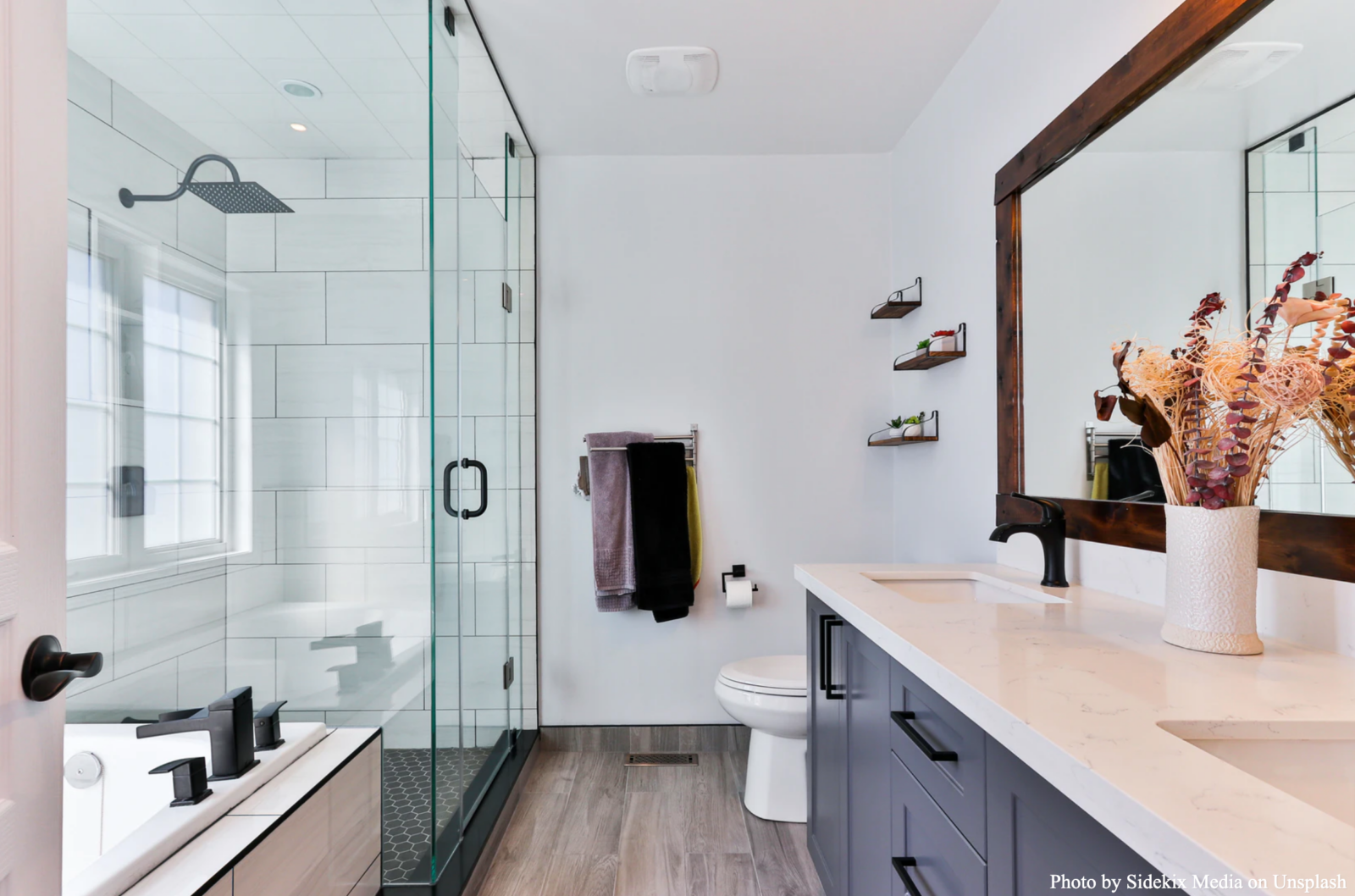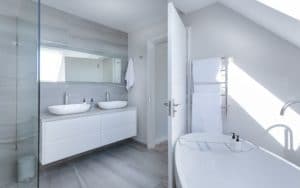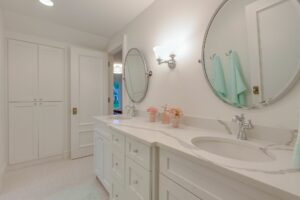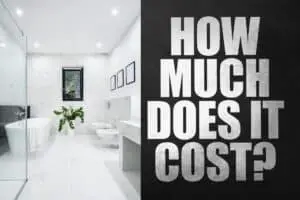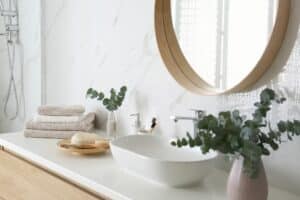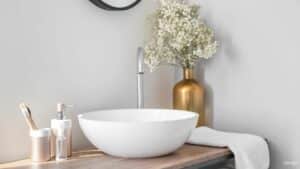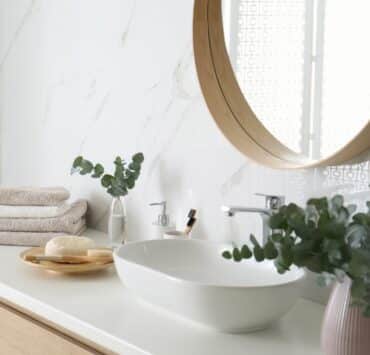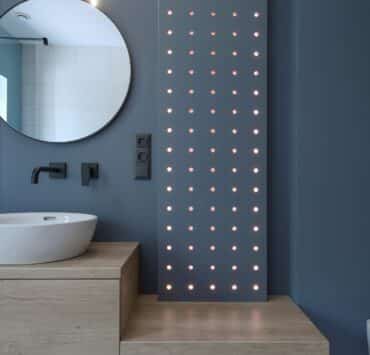Bathroom remodel can cost vary anywhere between $6,627 for moderate updates and escalating to $30,000 for a complete overhaul with premium materials. Alternatively, you can opt for smaller upgrades, such as a new toilet, shower stall, or faucet, for under $500 each. With such a cost range, it becomes important to learn how to save on bathroom remodel.
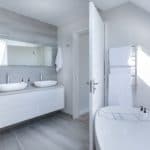
It’s not as difficult as you may think. Due to the smaller space, it can be easier to adopt cost-saving measures. Besides, DIY will reduce the costs of any bathroom remodel. However, you have to plan it right. Here are some tips to save money on a bathroom remodel.
How to Save Money on a Bathroom Remodel? Step-by-Step Guide
Develop a Budget and a Plan
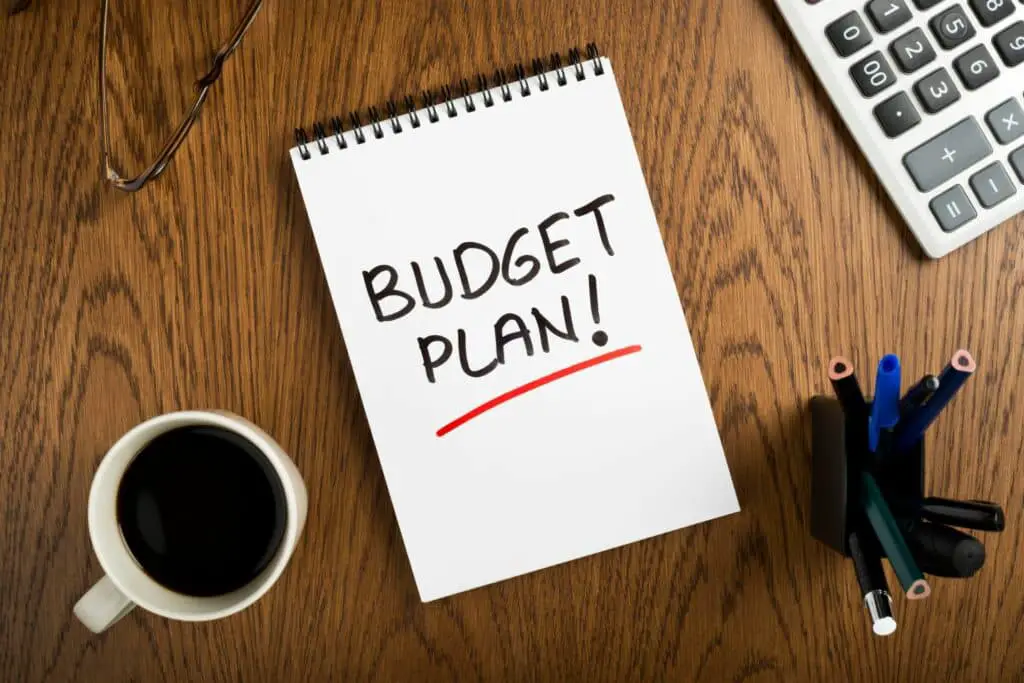 The best to save money on a bathroom is to develop a thorough plan and budget and adhere to it. If you know how much money you have to spend on the project, you will view how much money you can allot to various aspects of the upgrade.
The best to save money on a bathroom is to develop a thorough plan and budget and adhere to it. If you know how much money you have to spend on the project, you will view how much money you can allot to various aspects of the upgrade.
You can also use your budget to develop a plan and make sure to go over each detail, such as a new vanity, tile work, paint, and decor. Thereby, you won’t have any surprises when it comes to cost or the finished product.
Further, having a plan you have worked out with a professional bathroom remodeler will assure you that your design, budget, and length of the bathroom remodel are realistic, and it will give you a goal with a path to get there.
Retain the Bathroom’s Size and Layout
Changing the bathroom layout usually involves redoing the plumbing, which is an expensive affair. Moreover, the toilet discharge and sewer pipes are especially expensive to move.
Only alter or resize or alter the bathroom if it is necessary to accommodate your needs. Further, moving objects that are not easily movable is the single most expensive aspect of bathroom remodeling. Although you can alter the size and layout of your bathroom during a remodel, you need to weigh the benefits of that change against the financial impact of that change.
The cost of changing a bathroom’s size and layout can vary widely based on the extent of the changes, materials selected, labor costs in different regions, and whether the project involves moving plumbing fixtures like sinks, toilets, and showers. Here’s a simplified table to give a general overview:
| Change Type | Cost Range (USD) | Factors Influencing Cost |
|---|---|---|
| Minor Layout Changes | $1,000 – $5,000 | Minimal movement of fixtures, possibly updating without moving plumbing. |
| Moderate Layout Changes | $5,000 – $15,000 | Moving a few fixtures, minor plumbing work, some electrical rerouting. |
| Major Layout Changes | $15,000 – $30,000+ | Extensive plumbing and electrical work, moving walls, changing the location of major fixtures like the toilet, shower, or sink. |
Refinish Bathroom Elements Instead of Replacing Them
Removing or replacing existing plumbing fixtures and tubs or showers adds to the cost of the replacement fixtures. Further, it may include demolition work and construction changes along as well as a new installation.
You have to ask yourself if any of these items really need to be replaced. Are you replacing them for functional or for aesthetic reasons? If they are unattractive but usable, you may have options to dress them up or renew them instead of replacing them.
Interestingly, you can easily refinish your bathtub with an attractive, protective coating rather than completely replacing it. Also, you can paint your bathroom cabinet instead of sending it to the landfill and buying a new cabinet. Refinishing your fixtures is one of the most affordable bathroom updates that can help you save on a bathroom remodel.
| Aspect | Refinishing | Replacing |
|---|---|---|
| Cost | Significantly less expensive, often 50-75% cheaper. | Can be quite costly, ranging from $5,000 to $30,000 or more. |
| Time | Quicker, often taking only a few days. | Longer, could take weeks, depending on the extent of changes. |
| Impact on Environment | More eco-friendly by reducing waste. | Generates more waste and uses new resources. |
| Aesthetic Outcome | Can dramatically improve appearance but has limitations on changes. | Allows for complete aesthetic and functional transformation. |
| Durability | Varies depending on the material and quality of refinishing. | Typically, new items come with longer durability and warranties. |
| Customization | Limited to the existing layout and sizes. | Full customization options in layout, size, and design. |
| Overall Value | High value in terms of cost vs. improvement. Ideal for budget remodels. | Higher initial investment but can increase home value significantly. |
Preserve the Bathroom’s Drywall If Possible
You will need to replace the drywall in a bathroom due to high moisture levels. Drywall replacement is common enough, and you can expect this during a remodel. Besides, any drywall that is even remotely affected by mold should be immediately removed.
Consequently, the more walls you open up, the more walls you will need to close up later. Further, each closed-up wall means more drywall, paint, and associated labor.
If any section of the drywall is in good shape, keep it. Clear out and replace only the bad sections. Remember, drywall near or behind bathtubs and showers usually require replacement. However, drywall in other areas of the bathroom may be in good shape.
| Aspect | Cost Range (USD) | Factors Influencing Cost |
|---|---|---|
| Partial Drywall Replacement | $500 – $2,000 | Removing and replacing only damaged sections of drywall. |
| Full Drywall Replacement | $1,500 – $5,000 | Removing and replacing all drywall in the bathroom, including behind fixtures. |
| Labor Costs | $500 – $2,000 | Hiring a professional contractor to remove and install drywall. |
| Material Costs | $300 – $3,000 | Cost of drywall sheets, joint compound, tape, screws, and paint. |
| Additional Costs | Varies | Potential additional costs for mold remediation, plumbing adjustments, etc. |
Shelving Is Less Expensive Than Cabinetry
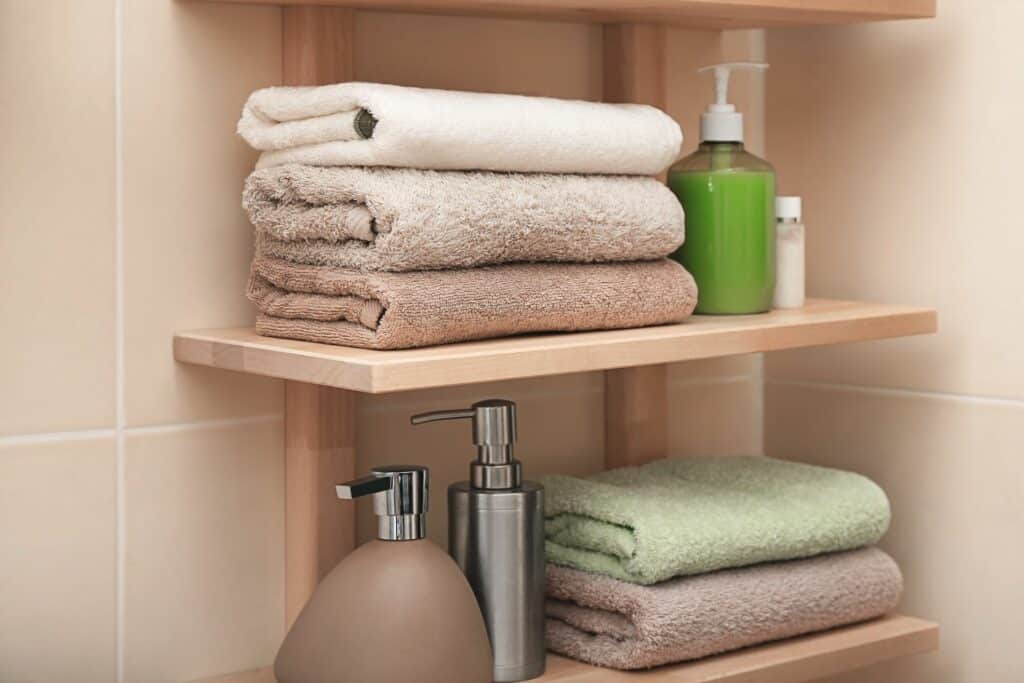 Cabinetry can be one of the most expensive portions of a bathroom remodel, especially if you want a lot of storage or if you have a lot of cabinetry to replace.
Cabinetry can be one of the most expensive portions of a bathroom remodel, especially if you want a lot of storage or if you have a lot of cabinetry to replace.
In contrast, shelving is a great alternative that can give you the same storage but for far less money. You can consider wall-mounted shelves behind the toilet or floor-standing units for free walls.
Besides providing the storage space you need, shelving also offers decorative options. You can store necessary items such as toilet paper, towels in pretty boxes or use some of the shelves to display decor items like vases and pottery.
| Aspect | Cabinetry | Shelving |
|---|---|---|
| Cost | Generally more expensive due to materials and labor. | Less expensive, typically ranging from $100 to $500+. |
| Storage Capacity | Offers ample storage space with drawers and cabinets. | Provides storage space but may be less than cabinetry. |
| Installation | Requires professional installation due to complexity. | Can be installed DIY or by a professional easily. |
| Customization | Customizable in terms of design, size, and finishes. | Limited customization compared to cabinetry. |
| Aesthetic Appeal | Adds a polished and cohesive look to the bathroom. | Offers a more open and airy feel, suitable for modern aesthetics. |
| Versatility | Fixed in place and less adaptable to changing needs. | Offers flexibility in rearranging shelves as needed. |
| Ease of Access | Easy access to items stored in cabinets with doors. | Items are readily accessible on open shelves. |
| Maintenance | Requires regular cleaning and may show wear over time. | Easier to clean and maintain, less prone to wear. |
| Space Usage | Takes up more floor and wall space, especially in small bathrooms. | Takes up less space, making it suitable for small bathrooms. |
DIY Where You Can
A DIY bathroom remodel is considered to be a great option if you want to save on a bathroom remodel. However, some tasks such as plumbing and electrical are best left to the professionals if you don’t have the experience or tools to do it yourself.
On the other hand, such as tiling or hanging wainscoting, are easy to learn and complete on the weekend. You can consider doing some of these tasks yourself to save on a bathroom remodel.
Skip Tile in Favor of Cheap Alternatives
Tile design for your bathroom can get expensive, particularly in modern bathrooms where floors, walls, showers, and backsplashes are often tiled. You can consider the following alternatives to save money on this part of your project.
- Tub surrounds are half the cost of tiled showers, or tiled tub surrounds, an excellent alternative if you need to replace a surround on a budget.
- You can consider vinyl tile for the flooring. Shop around, and you will find that modern vinyl tiling not only mimics the look of ceramic beautifully but is also designed to last.
- Tiled walls are expensive. Wainscoting will give your walls interest and variation for a much lower price, and this project is easy to DIY.
- There are few interesting ways to cut costs on tiled backsplashes. Of course, you can DIY to save money. Moreover, you can shop online for overstock tiles or visit surplus stores to find smaller tile batches at a discount.
Install a Standard Toilet
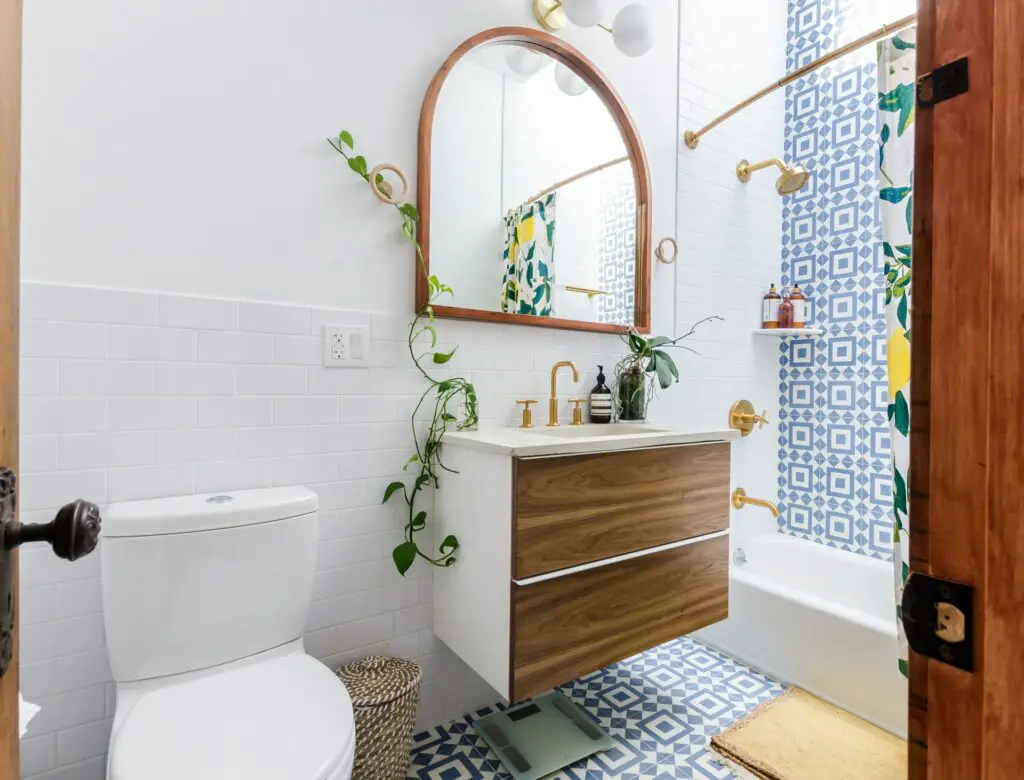
It certainly makes sense to replace an old water-wasting toilet with a new water-saving model if you want to save on a bathroom remodel. On the other hand, new toilets come with lots of features that can be surprisingly expensive and costly to maintain down the road.
Unless you have specific needs for a toilet with lots of exciting features, choose a simple, well-designed toilet that offers good flushing performance with little water. Toilets do not need to be expensive to do the right job.
Further, installing your toilet is a common DIY project for many homeowners that may seem more challenging than it really is. Admittedly, installing your own toilet will save money on the plumber’s bills.
